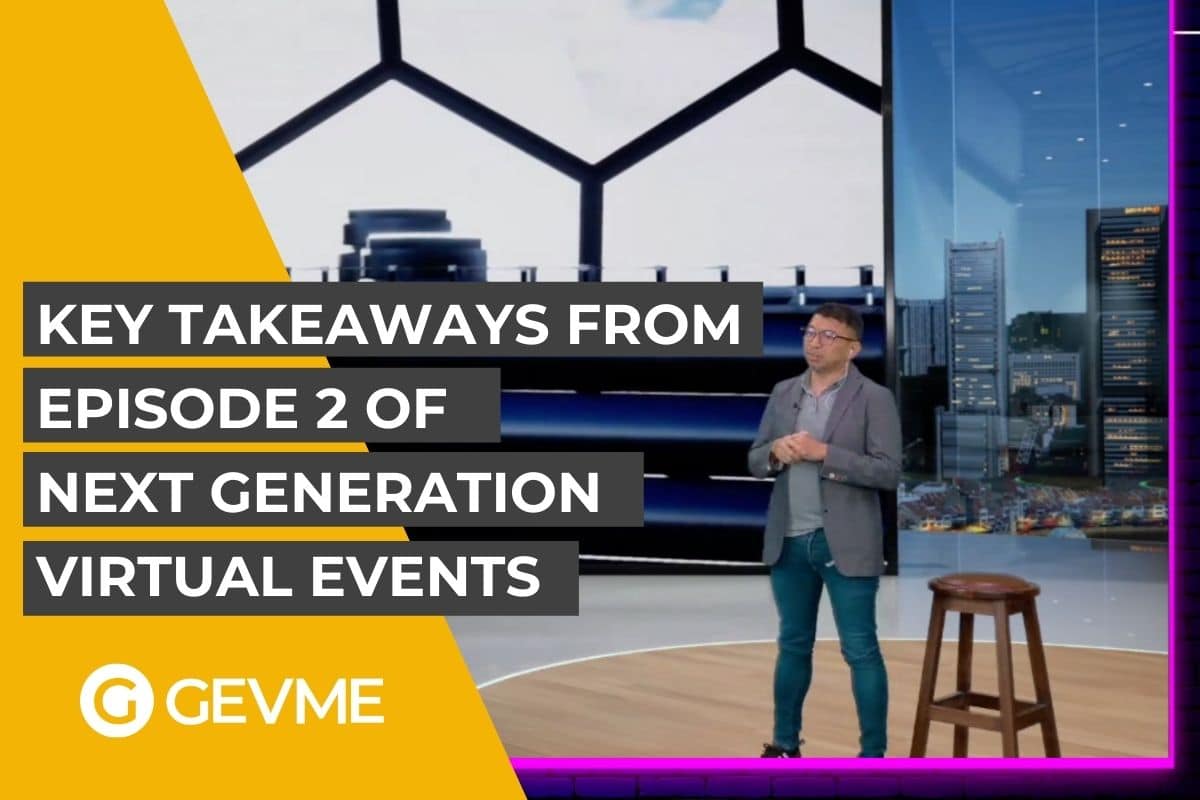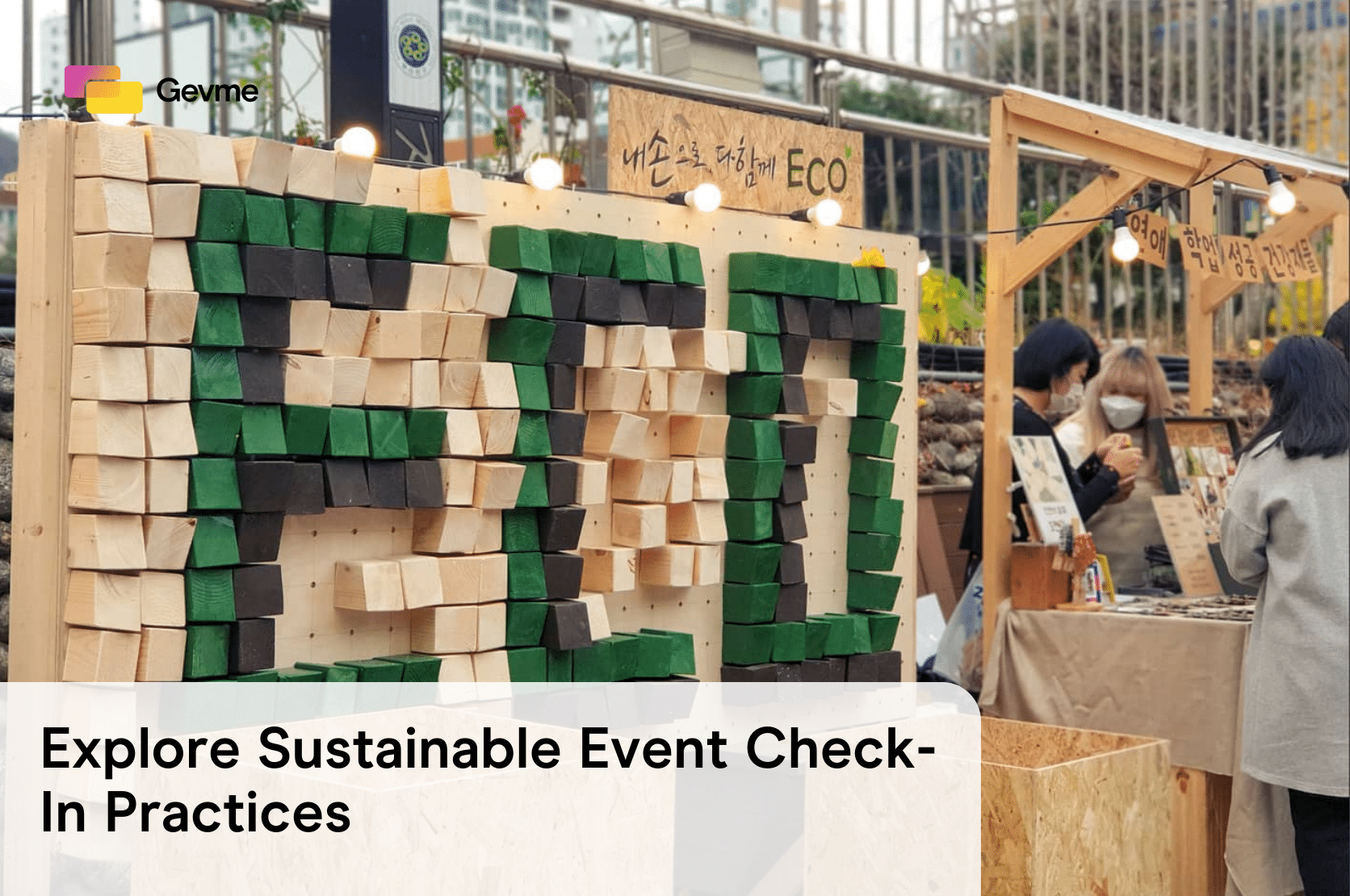GEVME yet again managed to successfully pull together another episode as part of the Next Generation Virtual Events series. From the very beginning of this journey that started with the Digital Event Series, event after event, Gevme has constantly been raising the bar time and again.
“Stop being a webinar creator and start thinking like a TV Broadcast producer.”
Keerat Singh, Gevme’s Digital Events Evangelist and the host of the episode, from the very beginning, set the tone of the event by stating the above quote.
Although the entire spectrum of the events industry going completely virtual is still at a tender stage. Hence it is crucial now more than ever for event professionals to learn and understand from the perspectives of people who are already the experts in creating great virtual events.
In this series of Next Generation Virtual Events, we have been discussing the principles of next generation virtual events. In episode one, we discussed why should next generation virtual events be unique. It should have an excellent user experience and aesthetic. It should be engaging and never dull.
In Episode 2, Gevme got in talks with Alvin Lim, the Co-founder of Cgangs. In this event, Gevme deep-dived into the 4th principle that is “Creating Virtual Events of Broadcast TV Quality.”
Episode 2 – Next Generation Virtual Events
In this episode, Gevme’s Digital Marketing Evangelist, and the host of the episode, Keerat Singh, along with Lim, discuss various aspects of creating virtual events of broadcast TV quality, their pros, and cons, challenges, etc.
After the main event, the audience interacted with the speaker and asked questions on a ZOOM Live. There was even an exhibition of Cgangs, Chab Events, and Gevme that the audience could visit and check out each of their products.
Let’s look at the key takeaways from Episode 2 of Next Generation Virtual Events.
1. Broadcast TV Quality is the new cool.
One of the most excellent examples the host, Keerat, mentioned was the production difference between the 1994 and the 2019 production of The Lion King (movie). This shows us how much technology has advanced over the years and what are the possibilities.
As the quality of the experience increases, so will people’s expectations. The film, gaming, and the news industry are leaders in making and conceptualizing new ways of advancing how we make the audience think and feel. This brings us to the next key takeaway.
2. Leveraging Technology for a better experience
The different kinds of technologies available now make it possible to broadcast events in real-time. A person can stand at an auditorium, host an event, or even fly out of space and give a keynote speech without physically going. This can now be possible thanks to Augmented Reality (AR), Virtual Reality (VR), Mixed Reality (MR), and Extended Reality (XR).
The news industry is an excellent example of how the industry uses real-time imagery to create interactive, immersive real-time graphical demonstrations.
The events industry can now think of new ways of keeping its virtual audience engaged and involved. The Grammy Awards sent its audience things like high-resolution cameras, ring lights, and microphones.
Giving your speakers and audience equipment and swag bags respectively will encourage them to attend the event and provide them with a sense of belongingness for the event even though they are not physically present at the time.
3. Importance of visual Story-telling narrative
One of the key most important aspects of any event is the art of story-telling. Yes. Events have always been perceived to get people together, and even today, it is. However, getting people to attend a virtual event is more tasking than an in-person event. Why? The simple reason here is that you are competing for people’s attention in the case of virtual events.
Remember how we used to have people talking about a particular topic and then have the PowerPoint presentation displayed at the side? Once upon a time, these worked well. Now, however, we events face something known as “Death by PowerPoint.”
While content is still essential, creating immersive graphics that will make people engage with your content is equally important
Would you preferably have someone read to you about Mars, or would you rather have a platform where you can look around and feel what Mars really must be like
Virtual events today are competing not only with their competitors within the same industry. In fact, they are competing with companies and leaders from all different industries. Virtual events today are competing with platforms such as Netflix, YouTube, Twitch, Instagram, etc.
When we were kids, colorful storybooks were used to help us picture and remember a story or poetry. No matter how old one is, the concept of story-telling will always be more potent than plainly reading or merely knowing about an idea or theory.
Here, the events industry needs to learn from gaming and the film industry how to leverage technology and make the images, locations, and items on display look more realistic and real-time.
4. What solutions are right for you?
Keerat (host) and Alvin (guest) went over the different types of productions already available out there that the events industry can try for itself. This included AR, VR, MR, and XR, as discussed earlier. However, which kind of production will work the best will differ from company to company, depending on their individual requirements and budget.
I would conclude this by quoting Alvin. “Each solution has a pro and con. It all depends upon what is your production requirement and which solution suits you better, and your budget.”
5. Challenges production companies face in the current scenario
One of the vital challenges that event companies face with regards to virtual production is the cost of investment into the setup.
People who may know 3D may not understand the game engine. People who know 3D and Game Engine may not understand broadcast. It is the collective knowledge of all the experts to come together to get started. Any production company that wants to this for their events will need the collaborative effort and expertise of all these different areas. These resources are limited in the market right now.
Some of the challenges Alvin mentions are that the planner needs to equip themselves with the knowledge of virtual production to serve their client well. Once we know about the client’s budget, we can create a budget-friendly production.
To reduce the mitigation of risk, it is essential to pre-plan and rehearse everything again and again. Test the audio, video qualities, and all the tech aspect of it—a lot of pre-event technical tests.
It is essential to understand the customer’s budget and their expectation to deliver the best. Also, keep in mind the investment cost as well.
6. Traditional and modern production tools
In traditional virtual events, you shoot your video using the green screen and then add the visuals.
In the case of virtual production, the whole workflow flips around where your content, effects, etc., have to be pre-planned, built, put in the green screen, and then directed and shot. This allows the director to visualize, execute, and record using a real-time camera tracking system and SOS lens calibration. In traditional events, it is not possible to give real-time effects like how virtual productions can provide.
Extend Reality production requires a media server and different hardware and software to provide production workflow and allow people to see and shoot using an LED wall.
Traditional production included having the green screen in place, after which the visualizations would be incorporated. Another type of production is the production using the LED wall. Both the methods of production are similar. However, they are different in terms of equipment use and workflow.
7. Transitioning from traditional to virtual production
As we are transitioning from traditional events to virtual production, several people have been into the events industry who don’t know much about the tech aspect of it. Similarly, people in the IT and tech aspects of events won’t know much about running an event. This is when experts from both these different fields come together and create something revolutionary.
8. Real-time possibilities virtually
Alvin shows a demo of all that can be possible with the help of virtual production. He even displays the mini-sized model on the ArtScience Museum, a huge robot, etc.
A realistic 3D dragon was made to appear during a live show for the online audience
Conclusion
Many of us have lately experienced something known as the ‘Zoom Fatigue”. This is because we are content-consuming beings. Why do platforms like Instagram, TikTok, etc., have millions of users per day? This is because it continuously produces content to keep users hooked onto their devices for long. The Next Generation Virtual Event series aims to be a platform to host such discussions.
Taking events virtual is already a big step that has been taken by the events industry. It is now time to level up and give our clients and audience the most budget-friendly production while grabbing audience attention.








